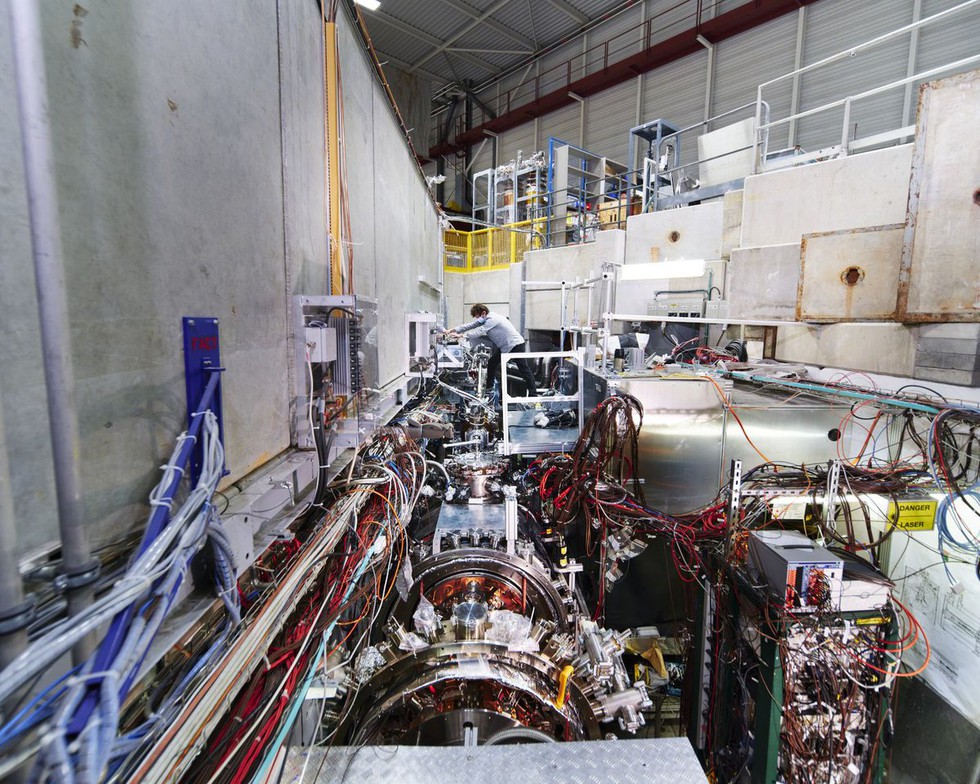An international team of physicists from the Anti-hydrogen Experiment: Gravity, Interferometry, Spectroscopy (AEgIS) collaboration has achieved a groundbreaking feat by demonstrating the laser cooling of Positronium.
What is Positronium?
- Positronium consists of a bound electron (e-) and positron (e+), making it a fundamental atomic system.
- It has a very short lifespan, with a half-life of 142 nanoseconds, due to annihilation.
- With a mass twice that of an electron, it’s a pure leptonic atom.
Significance of Laser Cooling
- Laser cooling of Positronium offers opportunities for testing fundamental theories in physics.
- Its halved frequencies for excitation make it suitable for laser cooling experiments.
Collaboration and Announcement
- Physicists from 19 European and one Indian research group, part of AEgIS, announced this achievement.
- The experiment took place at CERN, Geneva.
Precursor Experiment
- This experiment is a crucial step before the formation of anti-Hydrogen and measuring Earth’s gravitational acceleration on antihydrogen in the AEgIS experiment.
Experimental Process
- Multiple experimental runs were conducted in the CERN accelerator beam hall.
- The AEgIS experiment setup began in 2008, continuing until 2016.
- The experiment faced technological challenges but succeeded through innovations.
Results and Expectations
- Laser cooling reduced Positronium atoms’ temperature from ~380 Kelvin to ~170 Kelvin.
- The experiment utilized alexandrite-based laser systems in deep ultraviolet or infrared frequency bands.
- Expectations include spectroscopic comparisons for Quantum Electrodynamics (QED) and potential degenerate gas of Positronium.
Implications and Future Prospects
- High-precision measurements of properties and gravitational behavior could reveal new physics.
- Production of a positronium Bose–Einstein condensate holds promise for fundamental and applied research, including coherent gamma-ray light production.
Multiple Choice Questions (MCQs):
- What is the composition of Positronium?
- A) Proton and Electron
- B) Neutron and Positron
- C) Electron and Positron
- D) Neutron and Electron
- Answer: C) Electron and Positron
- What is the half-life of Positronium?
- A) 142 seconds
- B) 142 milliseconds
- C) 142 nanoseconds
- D) 142 microseconds
- Answer: C) 142 nanoseconds
- Where was the laser cooling of Positronium experiment conducted?
- A) NASA
- B) CERN
- C) ESA
- D) JAXA
- Answer: B) CERN
- What was the temperature reduction achieved through laser cooling of Positronium?
- A) From ~380 Kelvin to ~170 Kelvin
- B) From ~500 Kelvin to ~200 Kelvin
- C) From ~300 Kelvin to ~100 Kelvin
- D) From ~200 Kelvin to ~50 Kelvin
- Answer: A) From ~380 Kelvin to ~170 Kelvin
- What is expected from the laser cooling experiment regarding Quantum Electrodynamics (QED)?
- A) Formation of a Bose–Einstein condensate
- B) Measurement of gravitational behavior
- C) Spectroscopic comparisons
- D) Production of gamma-ray laser
- Answer: C) Spectroscopic comparisons
